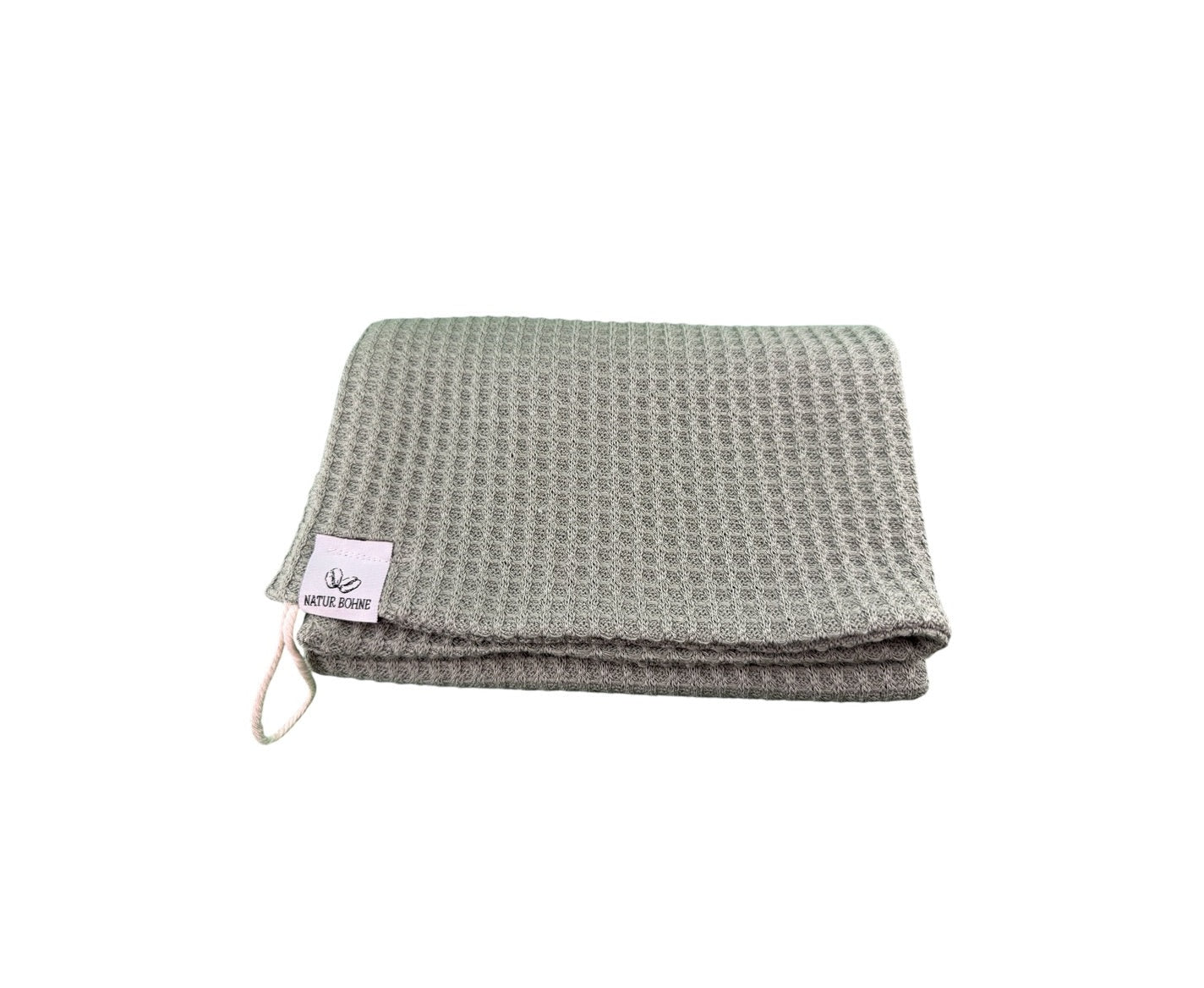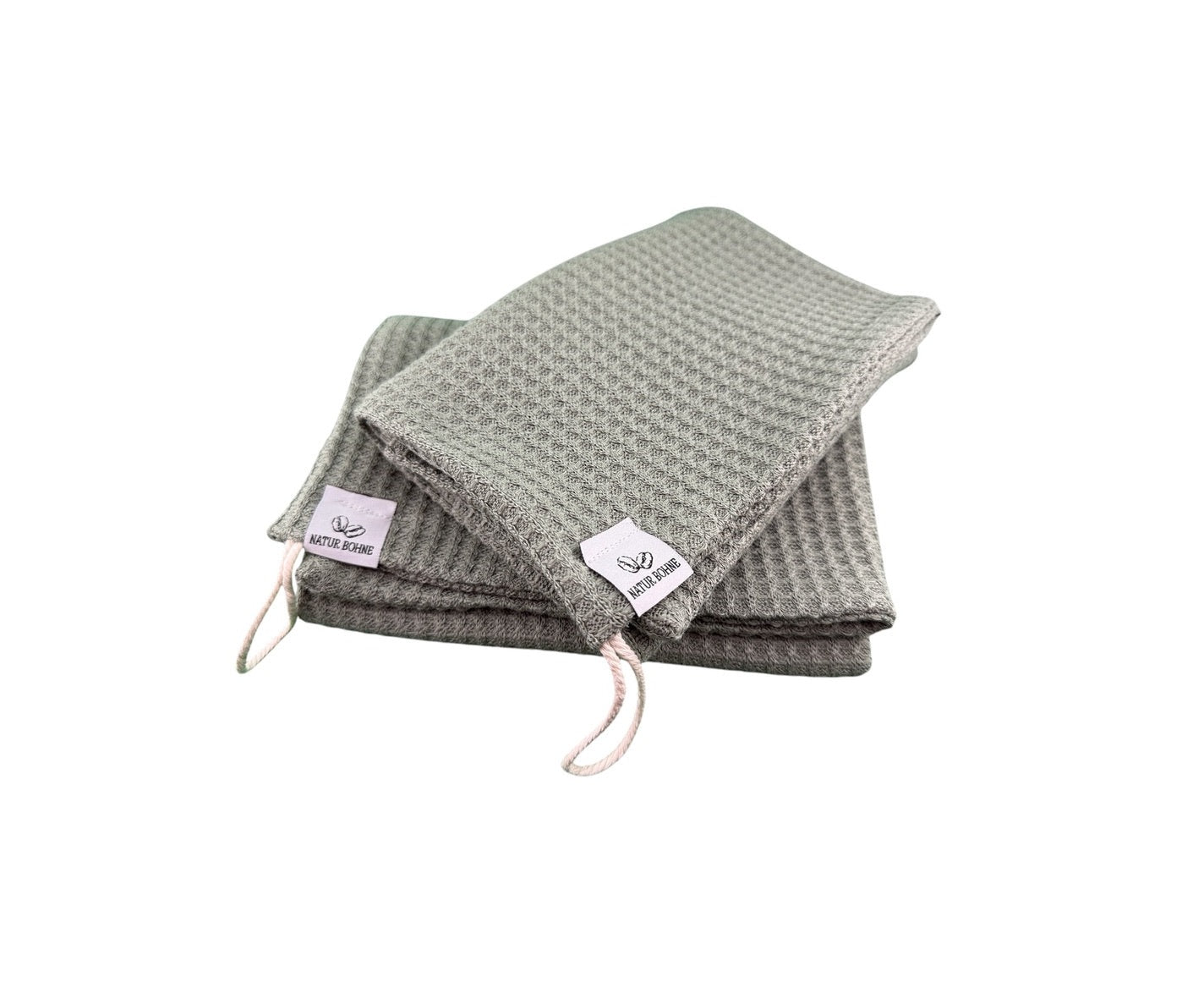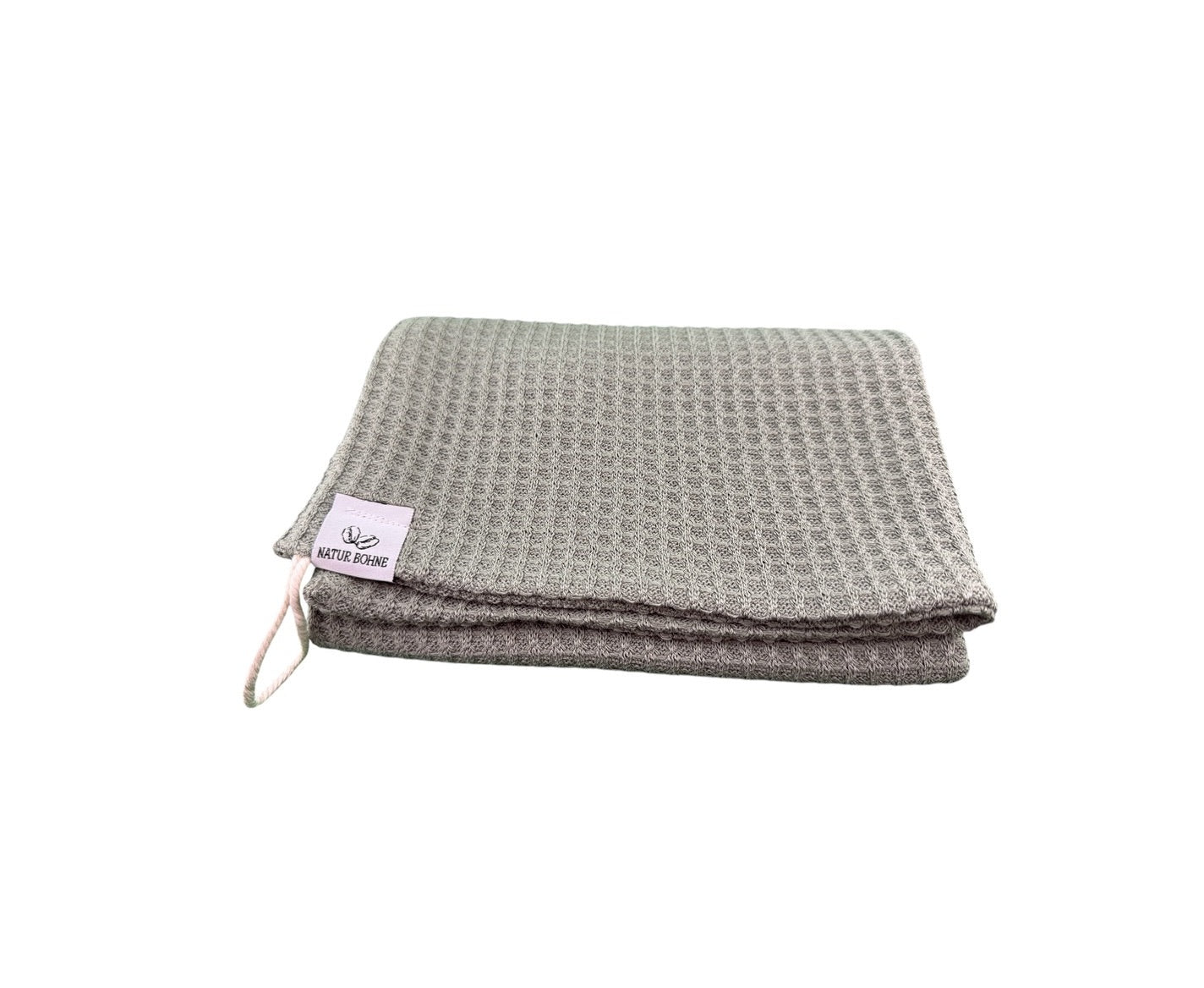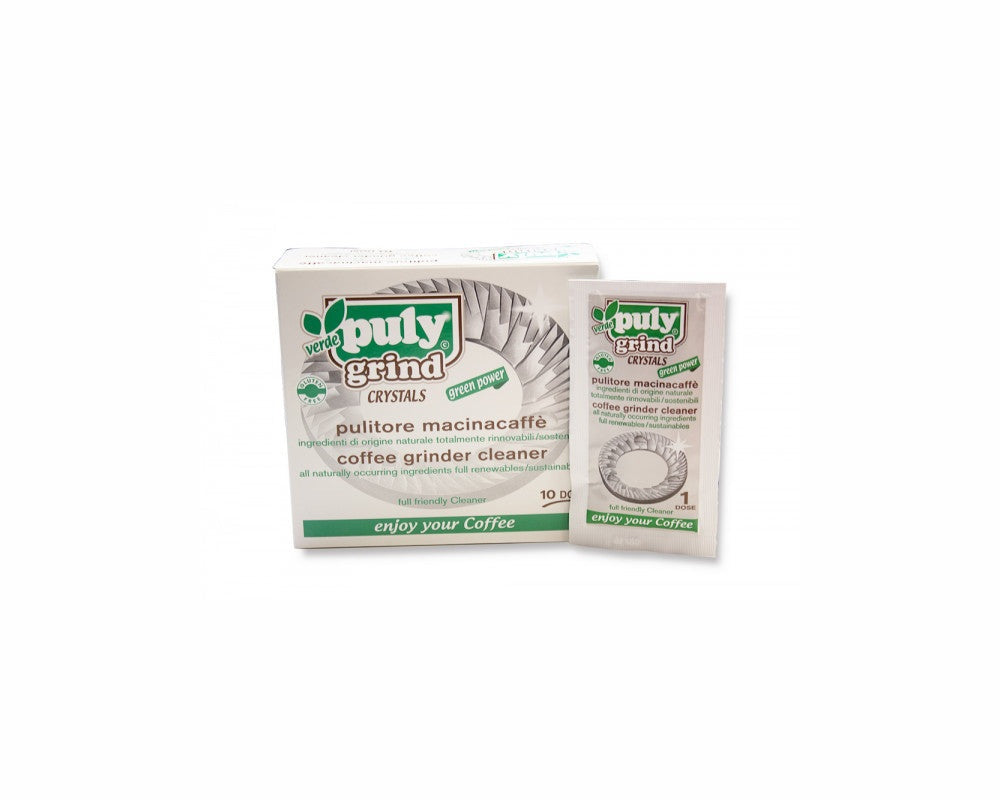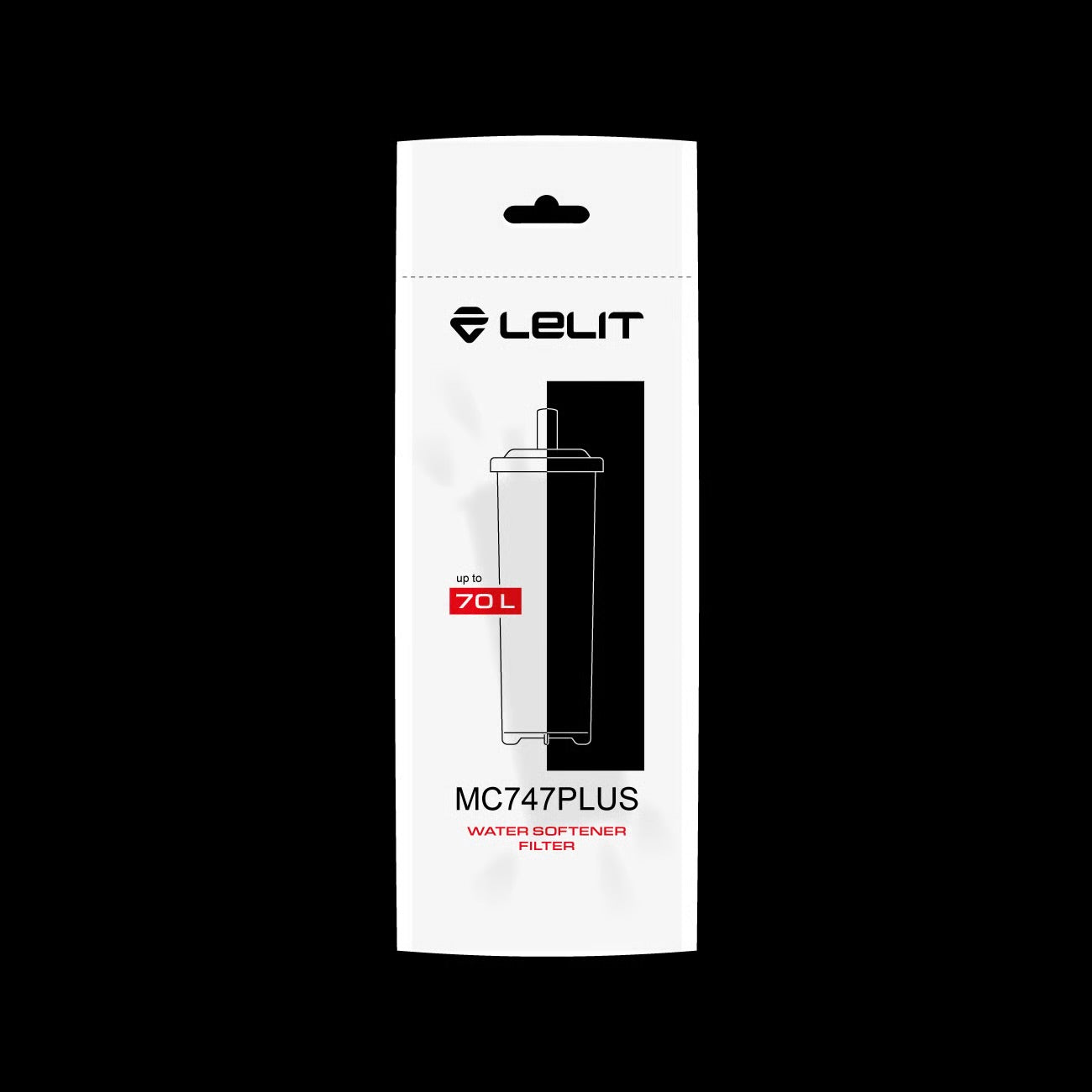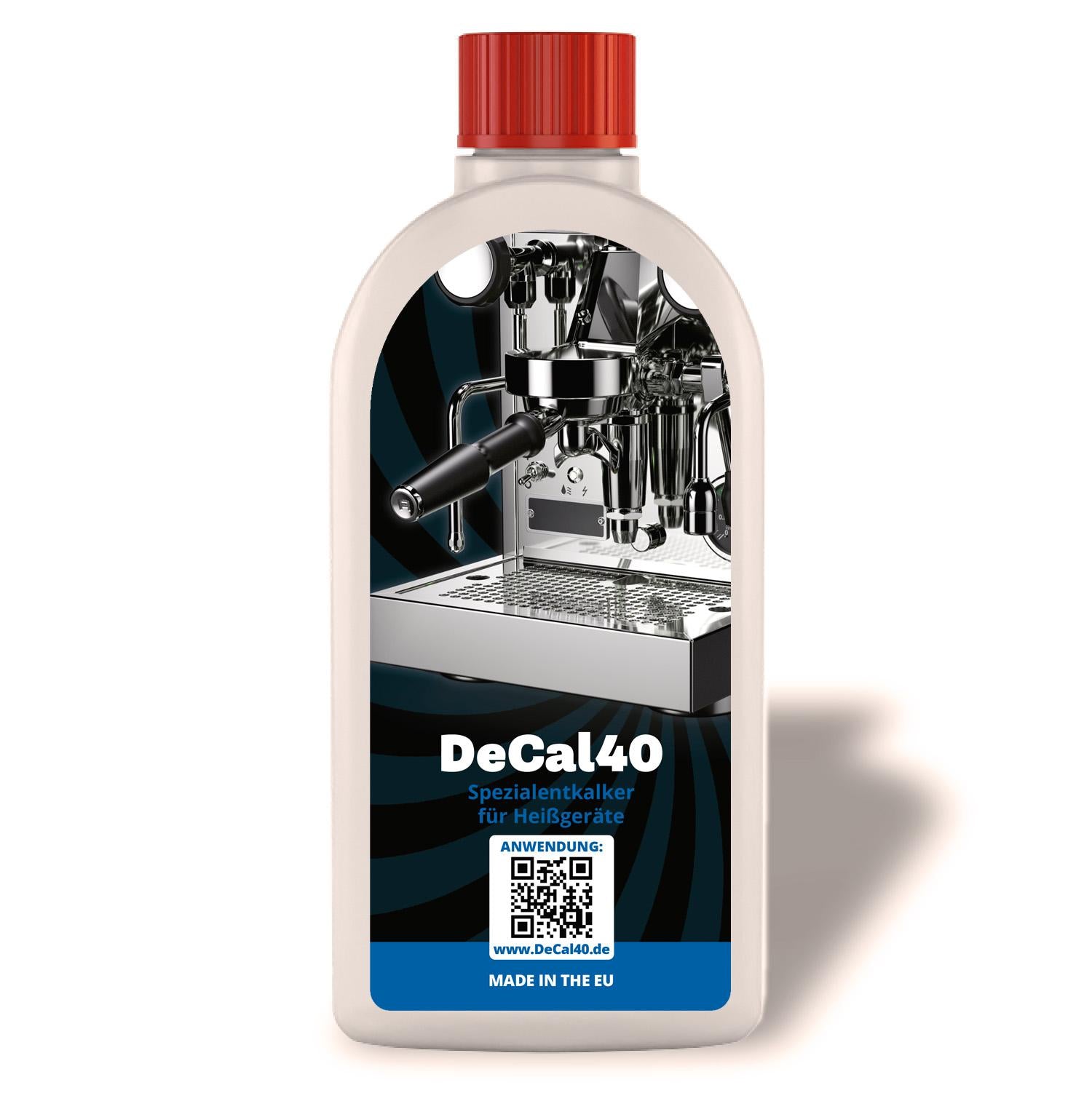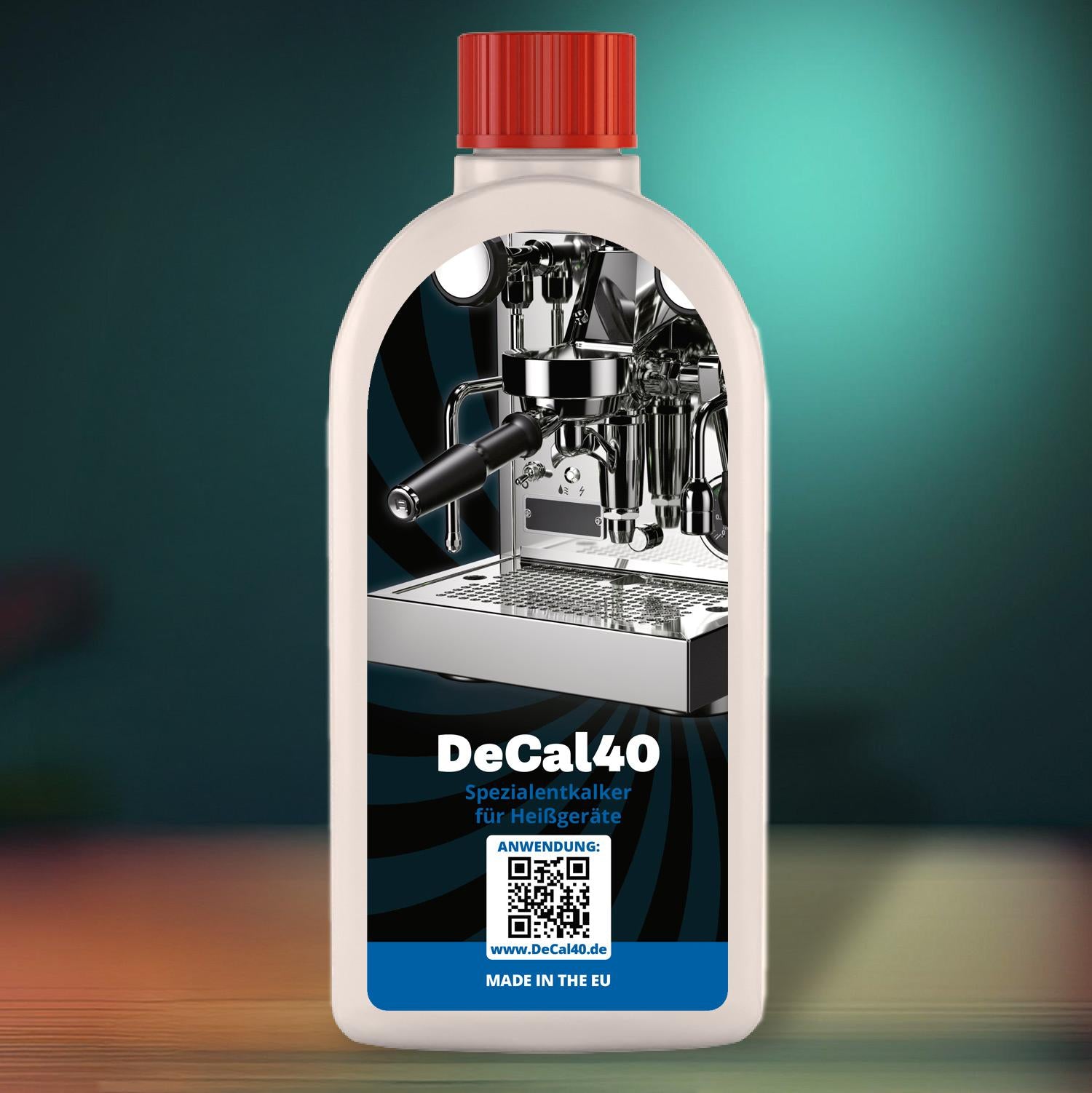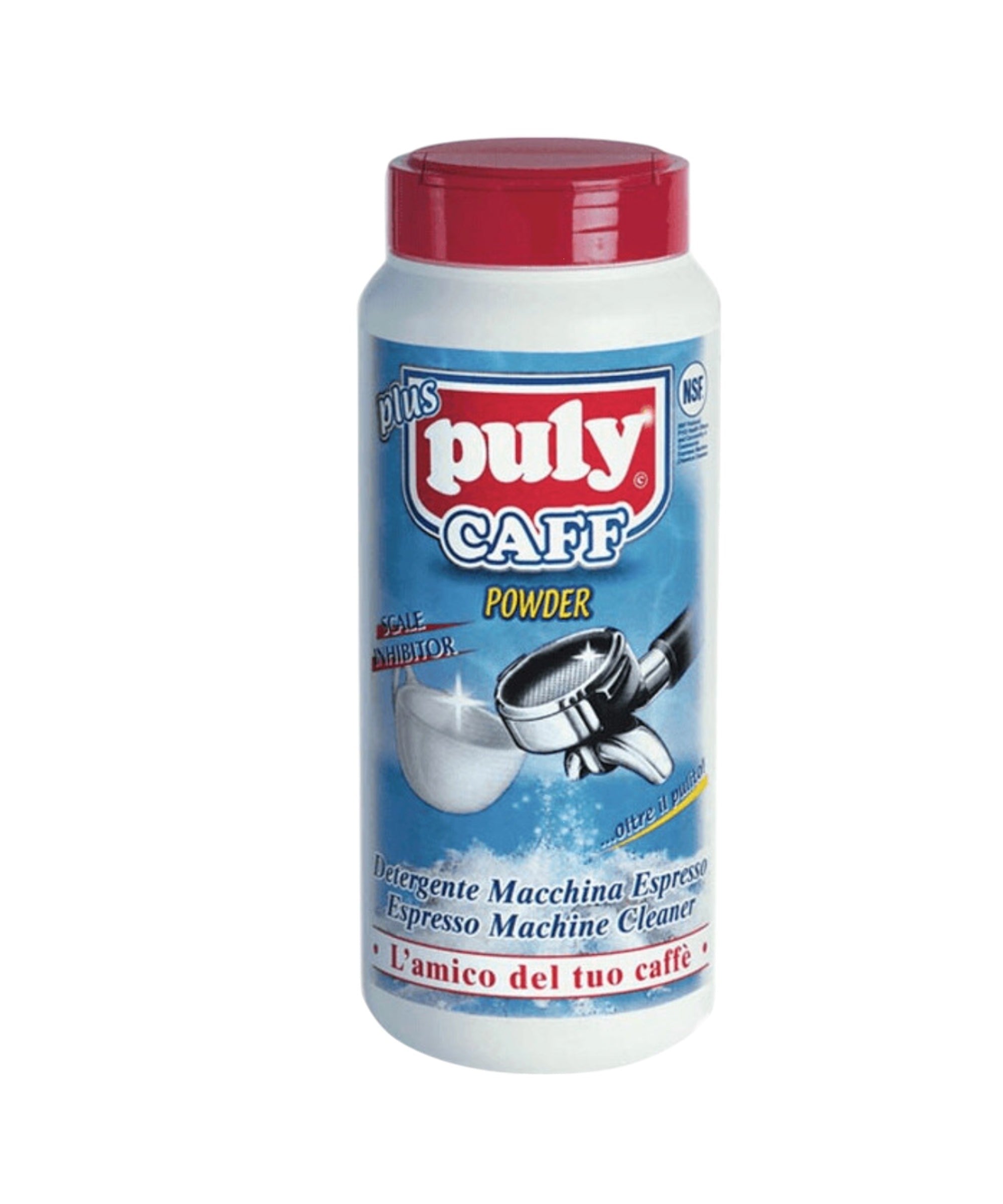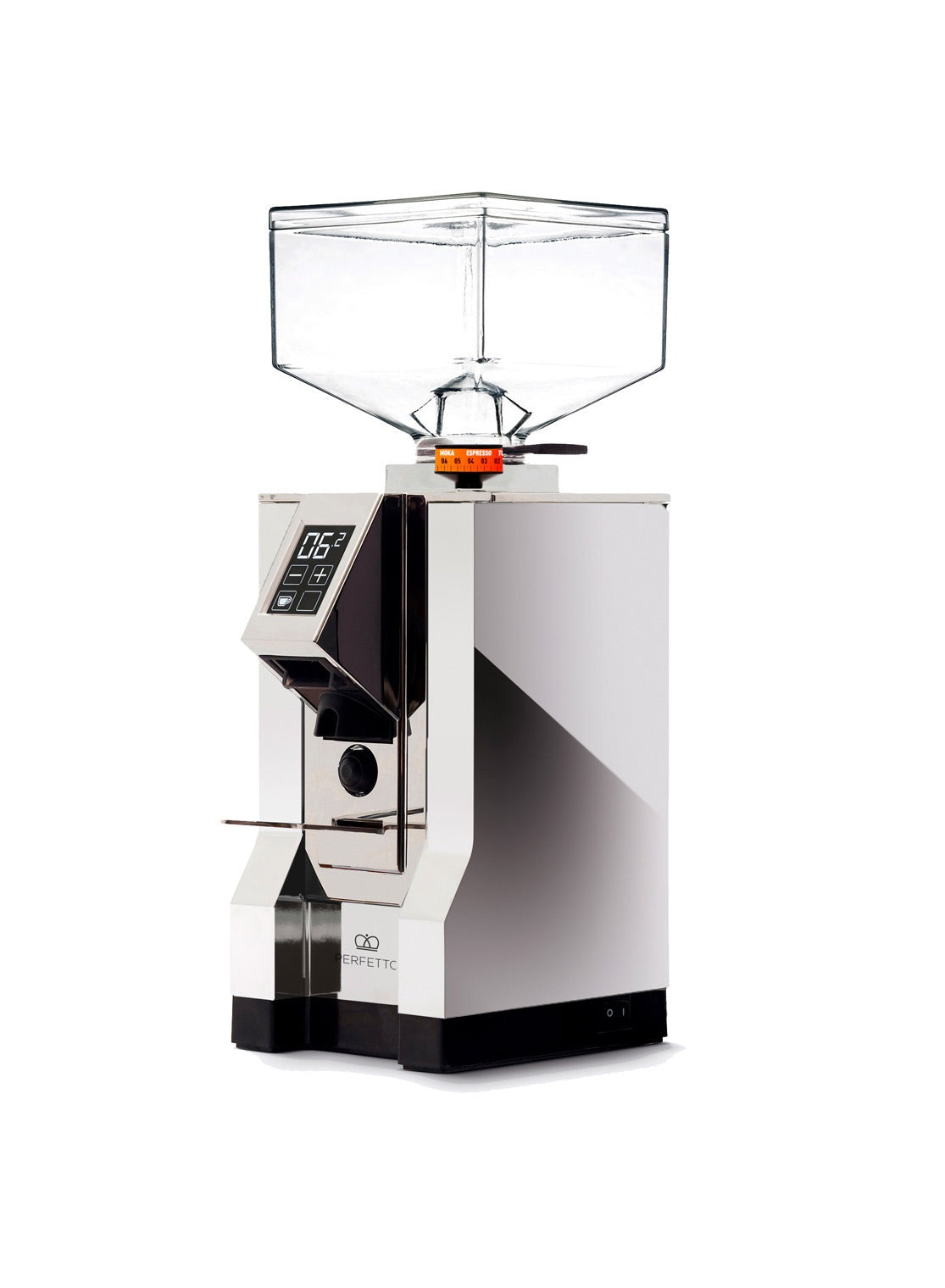
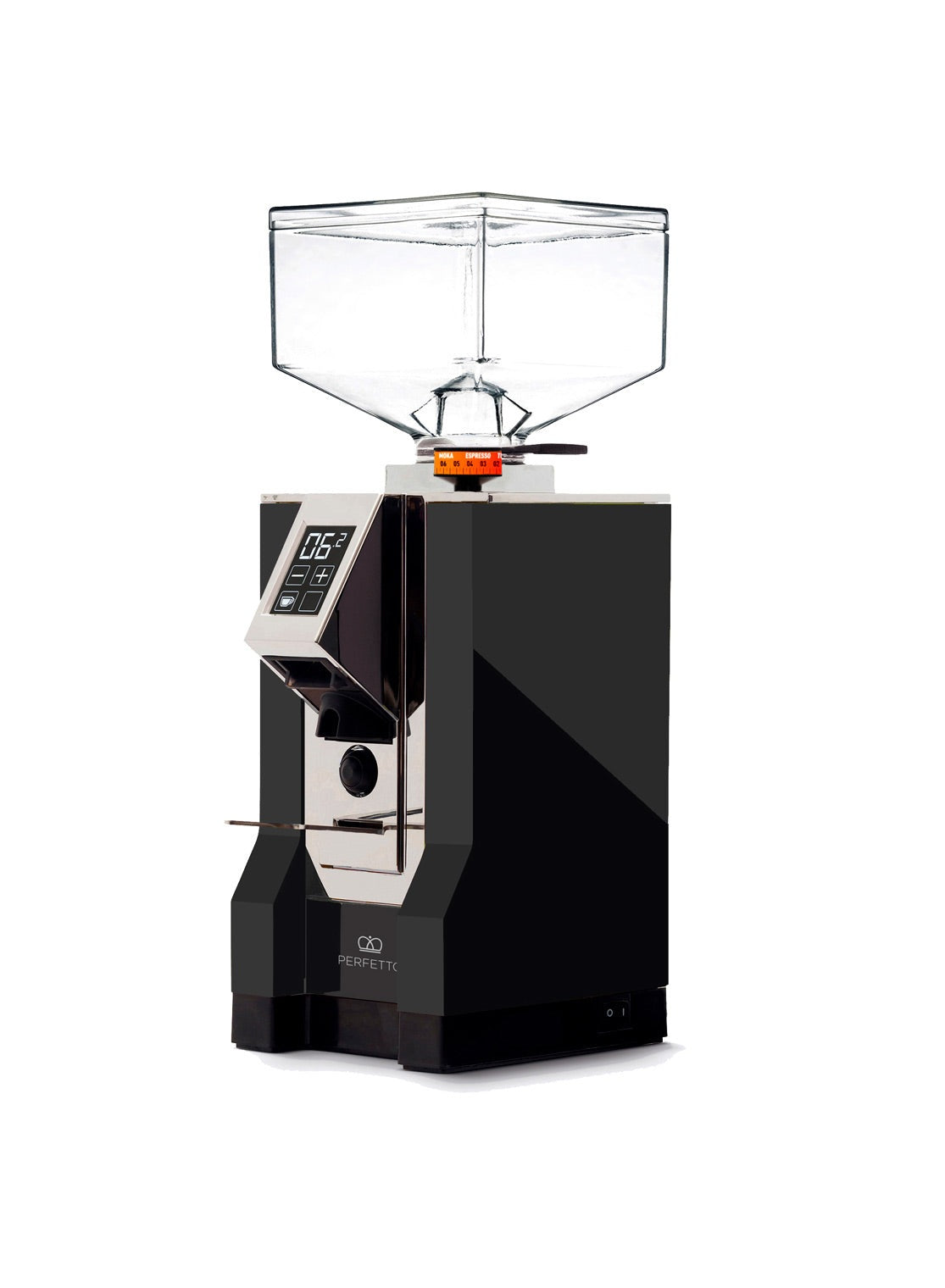
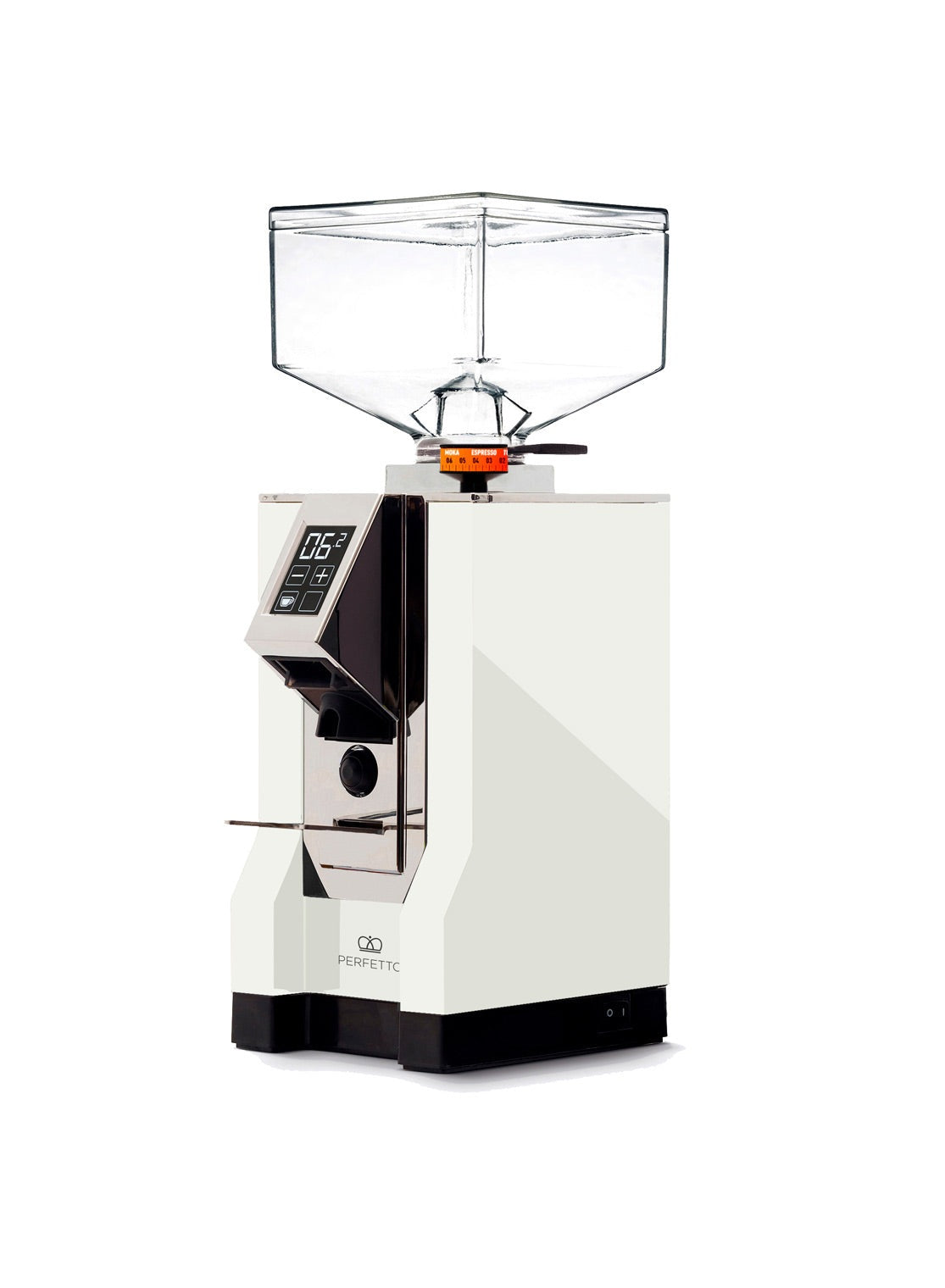
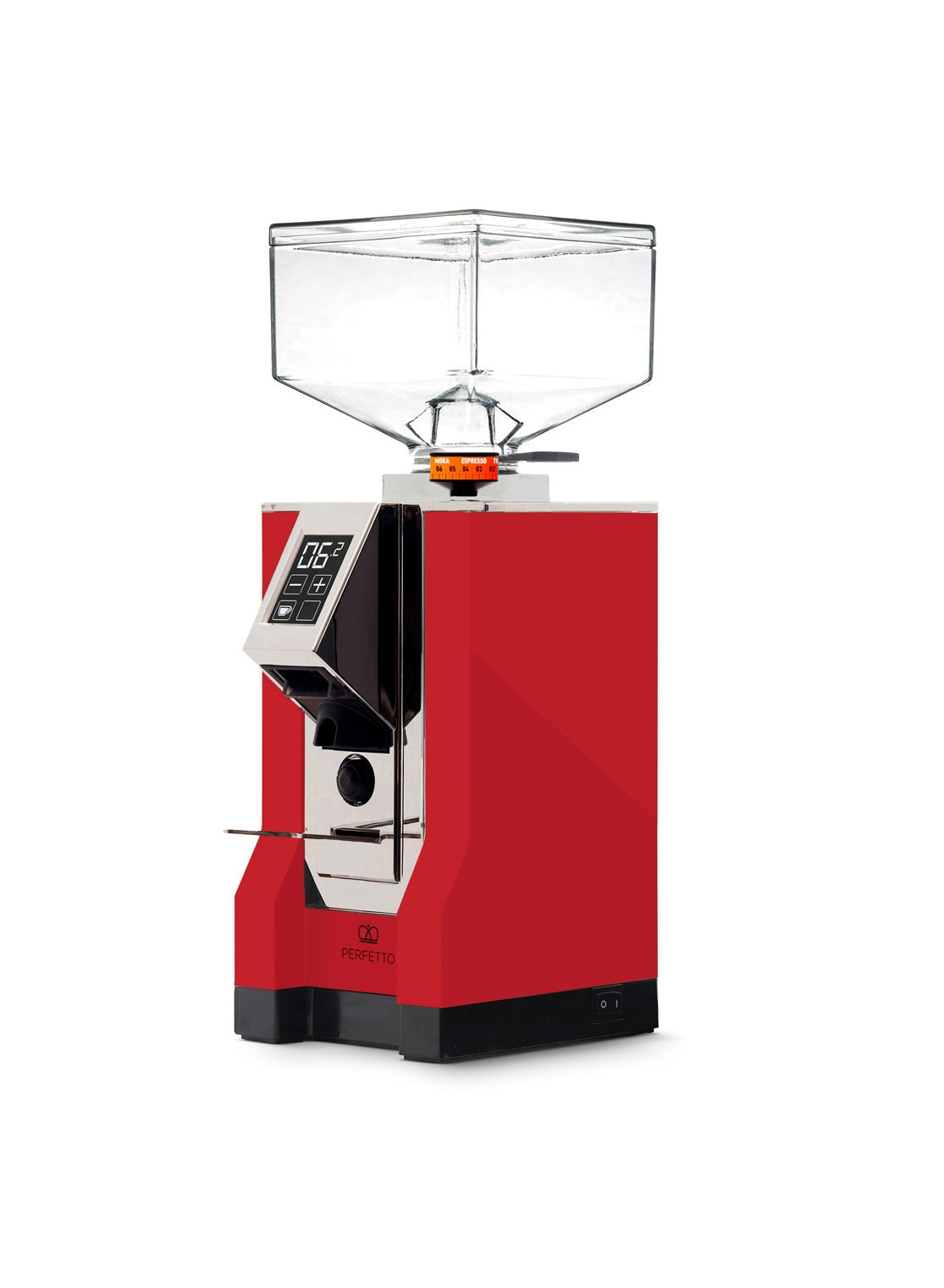
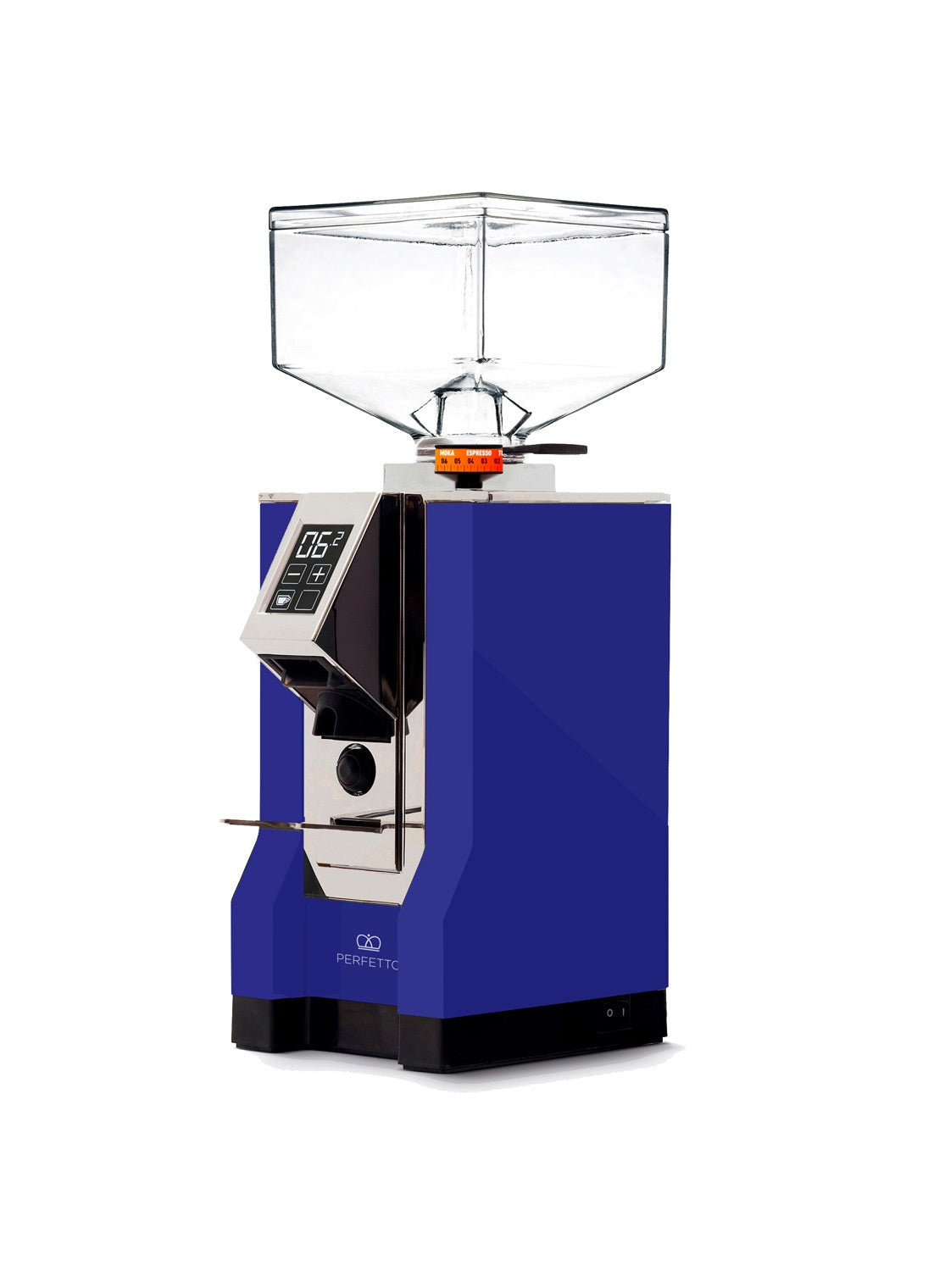
Eureka Mignon Perfetto 16CR
Finanzieren ab 17,77 € / Monat* mit
including tax, excluding shipping costs
🚚 Shipping within EU: 15 €
EU shipping costs, see shipping policy.
Passt wunderbar dazu

Eureka Mignon Perfetto 16CR
Eureka Mignon Perfetto 16CR – Präzision trifft auf Eleganz
Die Eureka Mignon Perfetto 16CR ist eine hochwertige, leise Espressomühle mit 50 mm Stahl-Scheibenmahlwerk, die sich durch ihre stufenlose Mahlgradeinstellung, das intuitive Touch-Display und die leise Silent Range-Technologie auszeichnet. Dank der neuen Easy-Setting-Funktion lässt sich der Mahlgrad mühelos von Espresso bis French Press anpassen. Die Mühle ist ideal für Heim-Baristi, die Wert auf exzellente Kaffeequalität legen.
Exklusives 16CR-Design mit Chrom-Ausrüster
Die 16CR-Version unterscheidet sich von der 15BL-Variante durch die hochwertige Chrom-Auswurfnase, die nicht nur optisch ein Highlight ist, sondern auch für eine noch gleichmäßigere Kaffeeausgabe sorgt. Während die 15BL eine schwarze Kunststoff-Nase besitzt, bietet die 16CR-Version eine edlere Optik und eine robustere Verarbeitung – perfekt für alle, die auf stilvolle Details Wert legen.
Perfekte Mahlergebnisse für Espresso & Filterkaffee
- 50 mm Flachmahlscheiben aus gehärtetem Stahl – für gleichmäßiges und klumpenfreies Mahlgut
- Stufenlose mikrometrische Mahlgradeinstellung – für präzise Anpassungen
- Easy-Setting-Rad – farblich markierte Skala für einfaches Verstellen
- ACE-Technologie – verhindert Klümpchenbildung und elektrostatische Aufladung
Touch-Display & Timer für höchsten Bedienkomfort
Das moderne Touch-Display ermöglicht die Programmierung von zwei Mahlmengen für Einzel- und Doppeldosierungen. Zusätzlich gibt es eine manuelle Option, um die Mahldauer flexibel anzupassen. Die Hands-Free-Siebträgerablage sorgt für bequemes Mahlen ohne Festhalten.
Leise & leistungsstark dank Silent Range-Technologie
Mit der Silent Range-Technologie gehört die Mignon Perfetto 16CR zu den leisesten Espressomühlen auf dem Markt. Sie mahlt 1,2 bis 2,3 g Kaffee pro Sekunde und ermöglicht somit eine schnelle und gleichmäßige Extraktion.
Design & Konstruktion
- Gehäuse aus Aluminium & Kunststoff – langlebig & hochwertig
- 300 g Bohnenbehälter – für längeren Mahlbetrieb
- Magnetische Siebträgerablage – stabil & praktisch
- Chrom-Auswurfnase – exklusiv bei der 16CR-Version
Eureka Mignon Perfetto 16CR – Präzision trifft Vielseitigkeit
Die Eureka Mignon Perfetto 16CR ist die ideale Kaffeemühle für alle, die zwischen Espresso und Filterkaffee wechseln möchten, ohne auf Komfort und Präzision zu verzichten. Mit ihrem hochwertigen 50 mm Scheibenmahlwerk aus gehärtetem Stahl liefert sie ein gleichmäßiges Mahlergebnis – ganz gleich, ob für Siebträger oder Handfilter.
Dank der stufenlosen mikrometrischen Mahlgradeinstellung mit dem Easy Setting System lässt sich der Mahlgrad besonders einfach und exakt anpassen. So gelingen sowohl feine Espressomahlungen als auch gröbere Mahlgrade für Filterkaffee – und das ganz ohne komplizierte Justierung.
Das intuitive Touch-Display mit Timerfunktion erlaubt die Wahl zwischen Einzeldosierung, Doppeldosierung oder manuellem Bezug. So hast du immer volle Kontrolle über die gewünschte Menge, egal ob du direkt in den Siebträger oder in einen Filterbehälter mahlst.
Mit der Silent-Technologie bleibt die Mahlgeräuschkulisse angenehm leise – ideal für den morgendlichen Einsatz, ohne die ganze Küche zu wecken. Das bewährte ACE-System (Anti-Clump & Electrostatic) verhindert zuverlässig Klümpchenbildung und elektrostatische Aufladung, sodass das Mahlgut sauber in den Behälter fällt.
Highlights at a glance:
- Für Espresso und Filterkaffee geeignet
- 50 mm Scheibenmahlwerk aus gehärtetem Stahl
- Stufenlose Mahlgradeinstellung mit Easy Setting System
- Intuitives Touch-Display mit Timerfunktion
- Quiet operation thanks to Silent technology
- ACE-System gegen Klümpchen und elektrostatische Aufladung
Die Mignon Perfetto 16C ist eine leise, präzise und einfach zu bedienende Kaffeemühle für alle Zubereitungsarten – mit stylischem Design und italienischer Qualität aus dem Hause Eureka.
Technical data
- Grinder: 50 mm flat grinding discs made of hardened steel
- Mahlgeschwindigkeit: 1,2 – 2,3 g/s
- Speed: 1350 rpm
- Motor power: 310 W
- Bean container: 300 g capacity
- Mahlgradeinstellung: Stufenlos, über Easy-Setting-Rad
- Dimensions: 35cm (H) x 12cm (W) x 18cm (D)
- Weight: 5.6 kg
Fazit: Warum die 16CR die bessere Wahl ist
Die Eureka Mignon Perfetto 16CR bietet alle Vorzüge der Perfetto-Serie, kombiniert mit einer edlen Chrom-Auswurfnase, die für eine noch gleichmäßigere Mahlgutverteilung sorgt. Im Vergleich zur 15BL-Variante mit schwarzer Kunststoff-Nase bietet sie eine noch hochwertigere Verarbeitung und eine elegante Optik. Perfekt für alle, die Präzision, Design und Benutzerfreundlichkeit in einer kompakten Mühle vereint haben möchten.
Información sobre el fabricante
If you have any questions, please feel free to contact us at any time. We will get back to you as soon as possible, within 24 hours on weekdays.
-
Shipping info
We ship all products the same day if ordered before 1pm.
-
Soporte
We will also be there to support you and advise you after your purchase. If you have any questions about the product you purchased from us, please contact us.
-
Contact
Email: hello@naturbohne.de
Phone: 07141 / 12345
grinder brush for coffee grinder
Naturbohne Barista Towel 40x40
Puly Grind mill cleaner 10x15g
Decal40 - Highly effective descaler for portafilter machines
Matching cleaning products
Cleaning
Frequently Asked Questions
I bought a new coffee grinder from Naturbohne and there are coffee residues in it.
Please note: Some manufacturers test their coffee grinders before shipping, which means that small coffee residues or bean residues can occasionally be found in the grinder. This procedure is used to test functionality and is considered a quality feature. Of course, we only sell new products - unless expressly stated otherwise.
Static charge – coffee grounds spray out from the side
With some coffee grinders, the ground coffee can become statically charged and spray out of the portafilter at the side. This means that not all of the ground coffee gets into the portafilter, which can lead to uneven extraction. Our recommendation: Use a dosing funnel to ensure that all of the ground coffee is precisely fed into the portafilter - for optimal espresso enjoyment.
What is dead space in coffee grinders?
Conventional coffee grinders often leave a so-called dead space in which coffee residues accumulate. These residues can not only affect the freshness, but also lead to old and fresh coffee grounds being mixed, which negatively affects the taste. In contrast, single dose grinders have a well-thought-out design that eliminates the dead space. Each portion is ground individually and precisely so that no residues are left behind - for a consistently pure and full-bodied coffee experience.
Which portafilter fits my espresso machine?
When choosing the right portafilter for your portafilter machine, it is important to know that each manufacturer develops its own brewing group - the most well-known is the Faema E61. However, this does not mean that any portafilter will fit without any problems. An incompatible portafilter can leak, which will have a direct negative impact on the quality of your espresso. We therefore recommend using either the portafilter originally supplied or one that is explicitly stated to be compatible with your machine. This will ensure that the pressure is optimally built up and the espresso is perfectly extracted.
Can I visit you or pick up the goods personally?
Yes, of course, you are welcome to come by and look at our products by appointment. We would be happy to advise you personally. The best thing to do is to send us an email with a few suggested appointment times.
We are located 5 minutes from the motorway between Stuttgart and Lake Constance on the edge of the Black Forest.
Important note, first use coffee grinders
Another little tip for the perfect start with your new mill:
You will get the best grinding result after you have ground about 1-2 kg of beans. It is best to use a few cheap beans so that the grinder can work optimally. And if you are wondering what you can do with the bean flour - it is perfect plant fertilizer! 🌿
It contains nitrogen, potassium, sulfur and phosphorus and is a real nutrient bomb for your plants.
¿Pueden realizar una calibración de offset en mi máquina de portafiltro?
Existen varios argumentos en contra de una calibración de compensación en las máquinas de portafiltro Lelit, especialmente en modelos como la Lelit Bianca. Estos se refieren principalmente a la complejidad y las limitaciones de la compensación como única solución para problemas de temperatura:
- Fluctuaciones de temperatura e inestabilidad. La compensación considera una diferencia constante entre la temperatura de la caldera y la temperatura de preparación. Sin embargo, en la práctica pueden ocurrir fluctuaciones de temperatura, por ejemplo, debido a tiempos de espera prolongados o preparación continua. Esto hace que la temperatura de preparación real no siempre sea predecible con precisión.
- Dependencia de las condiciones ambientales. Factores como la temperatura ambiente, la humedad y el estado de la máquina (por ejemplo, el tiempo de calentamiento) afectan significativamente la temperatura de preparación. Una compensación fija no puede equilibrar dinámicamente estas variables, lo que puede llevar a resultados inexactos.
- Pérdida de calor durante los tiempos de espera. Después de pausas prolongadas, el grupo de preparación se enfría y la máquina necesita tiempo para volver a la temperatura deseada. Una compensación correctamente ajustada no puede compensar esto, por lo que son necesarias medidas adicionales como un "Cooling Flush".
- Desajustes de fábrica. En algunos modelos de Lelit se ha encontrado que la compensación de fábrica a menudo está configurada de manera inexacta (por ejemplo, de 4 a 8 grados demasiado baja en la Lelit Bianca). Esto requiere una recalibración manual por parte de personal especializado, lo cual puede ser complicado para los usuarios finales.
- Malentendidos en la aplicación. Muchos usuarios están confundidos por la información contradictoria sobre la configuración de la compensación, lo que puede llevar a ajustes incorrectos. Por ejemplo, a menudo se espera que la compensación por sí sola resuelva todos los problemas de temperatura, aunque solo es parte de un sistema más complejo.
Conclusión
La calibración de compensación es una herramienta útil, pero no debe considerarse de forma aislada. Una combinación de control PID preciso, mantenimiento regular y técnicas adaptadas (por ejemplo, "spülshots") es necesaria para lograr resultados óptimos de preparación.
Do you have any more questions?
Contact
If you have any questions about our products, please write to us here or use the chat function.

